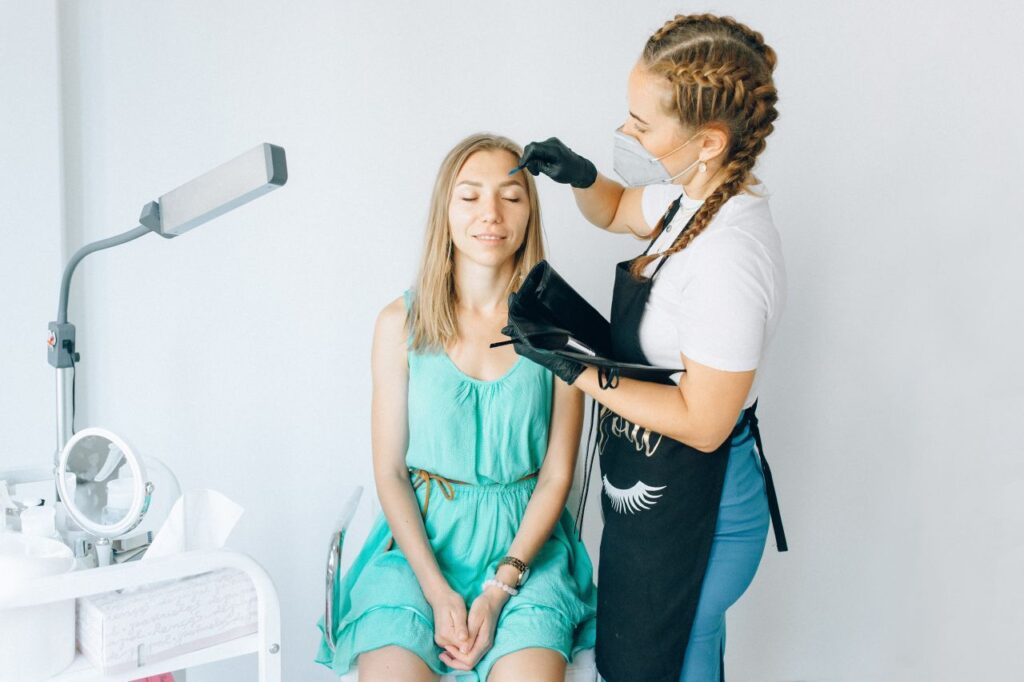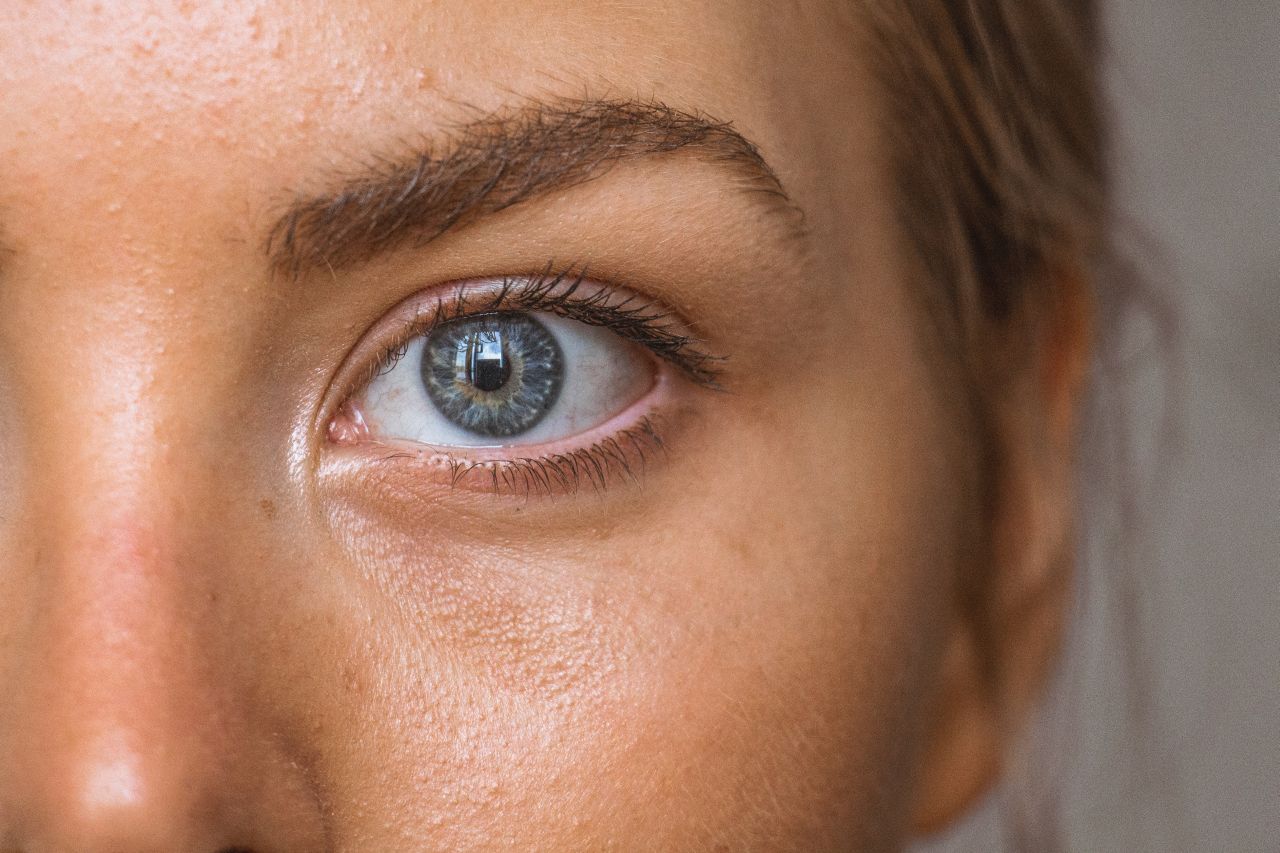Microblading is a semi-permanent process of tattooing pigments into the skin's surface layers to create fuller eyebrows. It's gained immense popularity in the past few years, becoming one of the most sought-after beauty procedures for obvious reasons; thick brows can frame your face and enhance your overall look. However, not everyone should be getting microblading done - certain circumstances could determine whether it's safe for individuals to get this procedure.
Because of its many advantages, microblading has quickly become one of the most sought-after permanent makeup procedures. Everyone who has heard of it wants thick, beautifully formed eyebrows that seem natural. Looking for microblading salon? Look no further,Cosmetic Tattoo by Rach got you covered.
It's important to note that only some are good candidates for this therapy. For example, people with certain skin types or medical issues incompatible with microblading should not get the procedure done. This blog post will discuss who should avoid microblading and why.
What Is Microblading?
Microblading is a relatively new aesthetic treatment, and the procedure's long-term implications are still unknown. This highlights the significance of picking a reliable and competent professional to carry out the procedure. Please do your due diligence and check their portfolio and references before hiring them.
Although microblading can greatly enhance your brows' appearance, it's vital to remember that the effects won't last forever. If you want to maintain the original colour of your tattoo, you may need to get touch-up treatments every few years. If maintenance at regular intervals is something you're interested in, get a specialist who does that.
You should consult your doctor and learn as much as you can about microblading before deciding to get it done. Before deciding, it's crucial to weigh the treatment's potential advantages and disadvantages.
When performing microblading, a very fine blade is used to implant pigment beneath the skin. As a result, scars, eyebrows, and other facial features can all be disguised using it.
Who Shouldn't Get Microblading Due To Skin Type?
The first category we'll discuss includes folks who technically qualify for this treatment but may have yet to experience the desired outcomes.
Those individuals typically have greasy skin. Extra sebum is produced by oily skin compared to dry skin. As a result of the sebum, the pigment from microblading fades before it should. They can undergo touch-ups as often as they like, but microblading repeatedly cuts the skin, which can lead to less-than-desirable outcomes. The hair strokes, in particular, end up seeming softer than they should. Eventually, the oil in your skin will make them appear smeared.
Also, those with aged skin should wait to get microblading done. Due to the fragility and thinness of their skin, microblading may not take or produce subpar results. Even worse, it could lead to irreversible skin damage.
But there are other options to consider. For example, powder or nano brow machines are a fantastic option for greasy or mature skin.
FAQs About Microblading
You should expect your skin to fully heal from your first microblading treatment after 25-30 days. The initial soreness and tenderness are expected, but they should subside as time passes. The colour of your eyebrows will change gradually from dark to light. As your skin heals, you might expect it to flake and peel.
Microblading usually fades away between the 18th and 30th month. Therefore, it would be best if you gave it a once-over every year or two. After the initial treatment's pigment has faded substantially, you'll need to return to your doctor for a touch-up.
It is important to keep the area clean and dry. For the next seven to ten days, please stay away from the brow area and don't touch it, rub it, pick at it, or get it wet. Also, avoid using any skincare products that are too harsh. For the next week, avoid applying cosmetics to the affected area.
Many individuals mistakenly believe that microblading is identical to micropigmentation, necessitating a clean shave before the procedure. It would be best if you didn't shave your eyebrows before getting them microbladed, despite the similarity between the two terms.
It can take up to two hours, but thanks to the numbing lotion, most patients report experiencing just a little pressure or discomfort and certainly no more pain than they would with a standard tattoo. This, of course, is subject to your pain threshold. You can anticipate experiencing some discomfort.
Qualified With A Note And Doctor's Clearance
People Who Have Diabetes
Your condition must be steady and under control at all times. Please see a doctor and have them write us a note.
Persons With Thyroid Disease
When used with some thyroid medications, you may notice that the colour of your brows fades more quickly.
Persons Suffering From Glaucoma
There is a greater possibility of acquiring an infection in the eye.
People Who Have High Blood Pressure
Maintaining a healthy blood pressure level is essential. You might experience slightly more bleeding than usual. Subpar results can be achieved as a result of excessive bleeding during the operation, which dilutes and flushes out the pigment hue.
Please check with your doctor and bring a note if you have any questions about your pre-existing ailments or are currently under a doctor's care before scheduling an appointment.See more of our eyebrow feathering services.
Who Shouldn't Get Microblading Because Of Medical Conditions?
People suffering from autoimmune disorders such as Lupus, Cronh's, Rheumatoid Arthritis, Von Willebrand's, and Sjogren's Syndrome.
Cutting the skin, or making small incisions, is required for the procedure known as microblading. The pigment is then put into these openings. It requires time to heal, much like a wound would over the course of its recovery. Because of the damage to their immune systems, people who suffer from autoimmune diseases may have difficulty recovering from injuries or illnesses.
People Who Have Rosacea, Skin Irritations, Or Psoriasis In The Vicinity Of The Treated Area
Microblading has the potential to either initiate an outbreak or significantly exacerbate an existing one.
People Who Are Prone To Keloid Scarring
Cutting skin predisposed to developing keloids is fraught with peril since the patient runs the danger of developing keloids directly on their face and experiencing less than optimal results.
People Suffering From Any Bleeding Disorder
Again, because microblading involves cutting the skin, patients in this category can experience complications.
Persons Who Take Blood-Thinning Drugs
Talking to your doctor about pausing your blood-thinning medication in order to undergo microblading is a wise idea if you're set on getting the therapy.
People Getting Chemotherapy
The only time cancer patients can get microblading done safely are before or after chemotherapy. Microblading can be done on eyebrows before chemotherapy, but healing time is important. After the initial 6-8 weeks of recovery, another healing period is necessary for the touch-up. Microblading can be performed up to a little over two months before chemotherapy.
If you want microblading done after chemotherapy, you'll have to wait until your body is ready. Inquire your physician about how long you should wait before getting your brows microbladed following chemotherapy. Some sources suggest six months, while others say a year.
Persons Who Use Accutane
Due to the fact that Accutane causes the top layer of skin to become more fragile, patients are required to stop taking the medication at least six months before their scheduled consultation.
People Who Have Recently Undergone Botox Or Fillers In The Area
A minimum of two to four weeks should pass after Botox treatment before you get your eyebrows microbladed. In addition, Botox should be avoided for at least four weeks following microblading to allow the brows to heal fully. Similar considerations apply to dermal fillers in the brow or forehead.
People Suffering With Epilepsy
It's not recommended to get microbladed if you've ever had a seizure, but some artists will work with customers who have had one seizure, say, ten years ago and whose epilepsy is under control. But, of course, get your doctor's OK first; that's a must.
Based On Individual Cases And Qualification
Individuals Who Already Have A Dark Brow Tattoo Or Use Permanent Cosmetics
Hair strokes can only be drawn on the skin with a tattoo or permanent makeup that is not excessively dark. Those who have had eyebrow tattoos in the past are encouraged to send a makeup-free photo of their brows for review.
Individuals With A Lidocaine Or Epinephrine Allergy
If you have an allergy to lidocaine and epinephrine, our most frequently used anaesthetic, we will not be able to use it during the surgery. However, you will be given a choice to go through with the procedure even if you are not sedated.
People Who Have Oily Skin
Oily skin types should not get microblading. Use a powder to fill your brows if your skin is like this. Combo brows, a microblading and powder effect hybrid, is an option for those with oilier or mixed complexion. If you have oily skin and are interested in microblading, we have a blog with information specifically for you. When you come in for a consultation, our Master Artist will decide if your skin is suitable for microblading.
People Who Are Prone To Cold Sores
Lip blush can trigger a cold sore eruption and lead to pigment loss if you're already susceptible. Antiviral medication should be started 48 hours before therapy begins to prevent an outbreak.
People Who Have Dark Lips Or Are Prone To Hyperpigmentation
For some people, especially those with naturally dark lips or prone to hyperpigmentation, we can't do some procedures as a result of the darkening of the hyperpigmentation. Suppose you have dark lips or are prone to hyperpigmentation. In that case, we'd appreciate it if you sent us an email with photos of your natural lips and the surrounding area.
People Who Have Sun-Damaged Skin
This may result in poor pigment retention. Check out our range of eyebrow tattoo services to help with your problems.
Others Who Should Not Have Microblading
Avoid getting microblading if:
- You are breastfeeding or pregnant - It is highly recommended that women not be microbladed when pregnant or nursing.
- You are under 18 - Most countries prohibit minors from getting microbladed eyebrows.
- You have an old brow tattoo that is visible - If you already have an eyebrow tattoo, it's unlikely that a microblading artist will work with you. Some people may advise getting rid of a tattoo or refuse to cover one up. To hide faded eyebrow tattoos, powder brows or microblading are preferable to microblading.
- You've got a sunburn - Before your microblading appointment, avoid tanning.
Conclusion
The microblading technique is a semi-permanent tattooing technique used to add volume to the eyebrows by depositing colour beneath the skin's surface. The many benefits it offers have contributed to its rising popularity over the past several years. Still, it should be kept in mind that only some patients are appropriate candidates for this treatment. It is not recommended for people with specific skin or health conditions. In addition, microblading involves implanting pigment under the skin with a very small blade, which can have unintended consequences. Before getting microblading done, you should talk to your doctor about it and study as much as possible about it.
Older people's delicate and fragile skin needs more care while performing microblading, but it's not the only option. It can cause permanent skin damage and takes time to recover. Lupus, Cronh's disease, rheumatoid arthritis, Von Willebrand's disease, and Sjogren's syndrome are all autoimmune disorders that can make it difficult for patients to heal from accidents or illnesses. If you are on blood-thinning medication and want to get microblading done, you should discuss this with your doctor. Microblading is completely safe for cancer patients either before or after chemotherapy.
Those who are getting microblading done after chemotherapy should start Botox treatments two to four weeks before the consultation for optimal results. Only a tattoo or permanent makeup that isn't too dark can be used to design hair strokes on the skin. You will not be able to use lidocaine and epinephrine during surgery if you are allergic to any of these substances. Lip blush can cause an outbreak of cold sores and lead to pigment loss. Thus people with oily skin shouldn't have microblading. Antiviral medicine should be started 48 hours beforehand to avoid a virus breakout during treatment.
Content Summary
- Microblading is a semi-permanent process of tattooing pigments into the skin's surface layers to create fuller eyebrows.
- It's gained immense popularity in the past few years, becoming one of the most sought-after beauty procedures for obvious reasons; thick brows can frame your face and enhance your overall look.
- However, not everyone should be getting microblading done - certain circumstances could determine whether it's safe for individuals to get this procedure.
- Because of its many advantages, microblading has quickly become one of the most sought-after permanent makeup procedures.
- It's important to note that only some are good candidates for this therapy.
- For example, people with certain skin types or medical issues incompatible with microblading should not get the procedure done.
- This blog post will discuss who should avoid microblading and why.
- Microblading is a relatively new aesthetic treatment, and the procedure's long-term implications are still unknown.
- This highlights the significance of picking a reliable and competent professional to carry out the procedure.
- You should consult your doctor and learn as much as you can about microblading before deciding to get it done.
- Due to the fragility and thinness of their skin, microblading may not take or produce subpar results.
- Please see a doctor and have them write us a note.
- Cutting the skin, or making small incisions, is required for the procedure known as microblading.
- Talking to your doctor about pausing your blood-thinning medication in order to undergo microblading is a wise idea if you're set on getting the therapy.
- If you want microblading done after chemotherapy, you'll have to wait until your body is ready.
- Inquire your physician about how long you should wait before getting your brows microbladed following chemotherapy.
- A minimum of two to four weeks should pass after Botox treatment before you get your eyebrows microbladed.
- However, you will be given a choice to go through with the procedure even if you are not sedated.
- Oily skin types should not get microblading.
- Use a powder to fill your brows if your skin is like this.
- When you come in for a consultation, our Master Artist will decide if your skin is suitable for microblading.
- Avoid getting microblading if: You are breastfeeding or pregnant - It is highly recommended that women not be microbladed when pregnant or nursing.
- You have an old brow tattoo that is visible - If you already have an eyebrow tattoo, it's unlikely that a microblading artist will work with you.
- To hide faded eyebrow tattoos, powder brows or microblading are preferable to microblading.


